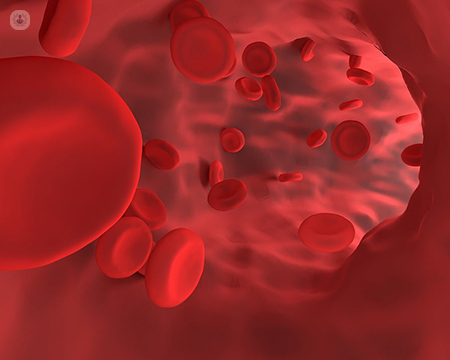Understanding peripheral arterial disease (PAD)
Autore:Peripheral arterial disease (PAD) is a vascular condition that occurs when there is a narrowing or blockage of the arteries, typically in the legs. This narrowing restricts blood flow to the limbs, leading to symptoms such as leg pain, cramping, and fatigue, particularly during physical activity. PAD is often a sign of systemic atherosclerosis, a condition where fatty deposits build up in the arteries, narrowing them and reducing blood flow. In his latest online article, renowned consultant vascular surgeon Mr Gary Maytham answers his patients’ most frequently asked questions regarding this condition.

Causes and risk factors
Several factors contribute to the development of PAD, including smoking, diabetes, high blood pressure, high cholesterol, obesity, and a sedentary lifestyle. Advancing age is also a significant risk factor, as the arteries naturally become less elastic and more prone to blockages over time.
Diagnosis
Diagnosing PAD typically involves a combination of medical history assessment, physical examination, and non-invasive tests such as ankle-brachial index (ABI) measurement, Doppler ultrasound, or angiography. These tests help determine the extent of arterial blockage and assess the overall condition of the blood vessels.
Treatment options
The primary goals of PAD treatment are to relieve symptoms, improve quality of life, and reduce the risk of complications such as heart attack, stroke, or limb amputation. Treatment strategies may include:
Lifestyle modifications
- Giving up smoking: Quitting smoking is crucial in managing PAD as it reduces further damage to the arteries.
- Regular exercise: Supervised exercise programs can help improve circulation and alleviate symptoms.
- Healthy diet: Adopting a diet low in saturated fats and high in fruits, vegetables, and whole grains can help manage underlying conditions such as high cholesterol and diabetes.
Medications
- Antiplatelet medications: Drugs such as aspirin or clopidogrel may be prescribed to reduce the risk of blood clots.
- Cholesterol-lowering medications: Statins help lower cholesterol levels and reduce the progression of atherosclerosis.
- Blood pressure medications: Controlling hypertension is essential in managing PAD and reducing the risk of cardiovascular events.
Interventional procedures
- Angioplasty and stenting: In cases of severe arterial blockage, minimally invasive procedures such as angioplasty (balloon dilation) and stenting may be performed to restore blood flow.
- Atherectomy: This procedure involves removing plaque buildup from the arteries using specialised catheters or devices.
Surgery
- Bypass surgery: In advanced cases where other treatments are ineffective, bypass surgery may be necessary to reroute blood flow around blocked arteries, restoring circulation to the affected limb.
Is peripheral arterial disease a serious condition?
Yes, PAD is a serious condition that requires prompt medical attention and ongoing management. Left untreated, PAD can lead to complications such as:
- tissue damage
- non-healing wounds
- limb amputation (in severe cases)
Moreover, PAD is associated with an increased risk of heart attack, stroke, and other cardiovascular events, emphasising the importance of early detection and intervention.
Remember, early detection and intervention are crucial in effectively consultant managing peripheral arterial disease and maintaining a healthy, active lifestyle.
Mr Gary Maytham is a consultant vascular surgeon based in Surrey and London. If you would like to book a consultation with Dr Maytham, you can do so today via his Top Doctors profile.


